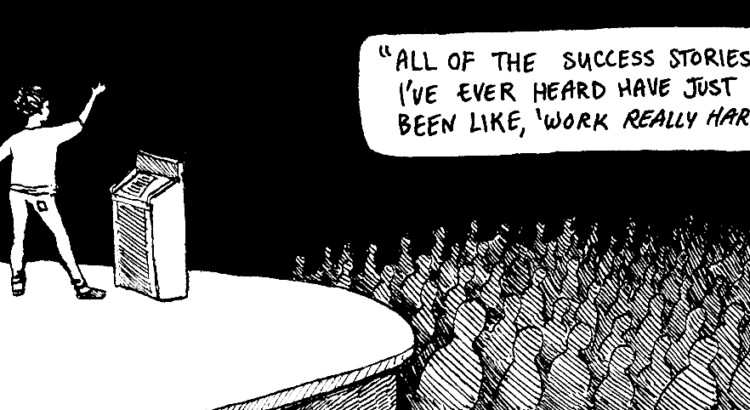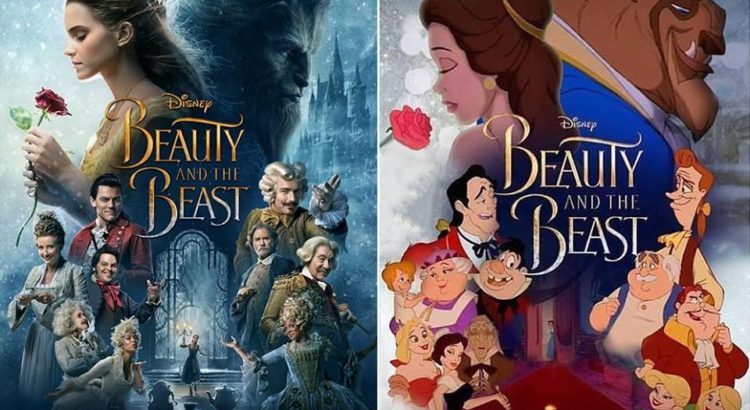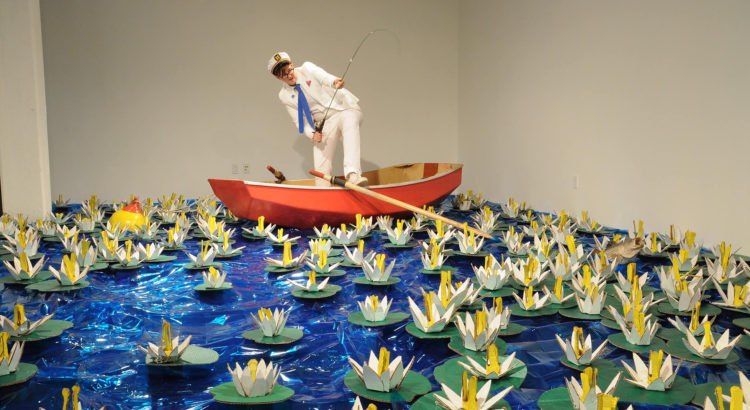For his master’s thesis, an animation student created a short film about a kiwi who followed its dreams to the end. We’re talking about the bird, not the fruit. Unlike other birds, the kiwi is incapable of flight. It—actually, let’s engender it—he, only has small, stubbed wings that cannot lift him into the air. Longing to achieve flight, the kiwi spends what appears to be years constructing a forest on the vertical face of a cliff. Once built, the kiwi jumps off the cliff and “flies” through a forest, fulfilling a lifelong goal. The film ends as bittersweet tears stream from his eyes. The animation fades to black. We realize we’ve just witnessed a suicide.
The video, you can watch it here on YouTube, has raised a good deal of controversy in the comments.
Much of the discussion revolves around whether the film gives positive or negative messages. Positive, in that the kiwi had finally achieved his dreams. Negative, in that the kiwi had killed himself in the pursuit of something outside his limits. Both arguments are valid, and the arguments continue for 78,000+ comments (at the time of this posting) with no mutually decided “right” answer. Discussions like this are numerous. Especially so on the Internet. Especially so over a good piece of art. And “Kiwi!” is just that.
It’s just art.
An impressive work of art, no doubt, that raises good discussion and stirs the pot, making viewers feel something. But the important thing to realize is that the video is neither “good” nor “bad” in isolation; like most things, it can be reflected in positive and negative light. Regardless of this morally ambiguous identity, the film explores an important concept: potential vs. desire.
There’s a good mathematical way of looking at this. (I apologize in advance; I know this is an art blog). If you take piano playing, for example, and allot musical ability on a scale of one to twenty-five, you can score pianists based on two parameters—potential and desire—each worth one to five points. Potential you cannot control. Potential is one’s natural aptitude for piano playing. Desire you can control. Desire is the amount of time and energy one invests in something. For some people, they are born with an affinity for piano playing, maybe at a score of five. If these people were to invest a good deal of time (a four or five on the desire scale) into piano playing, they could be very accomplished in the art, receiving a cumulative total of twenty to twenty-five. This is great, for they reached their full potential. But then there are other people. These people have little to no affinity for piano playing, so their potential score is a one. This means if they invested their full effort into the art, the highest score they can achieve is five. This is the kiwi. The kiwi has little potential for flight, so despite his hard work, he’ll never be that good. Ergo, he dies trying.
This is sad. But we can find consolation in final success. Although he spent his whole life laboring toward short-lived benefits, he ultimately achieved what he wanted—flight. If you leave it at that, you can step away from the film with a happy feeling. The kiwi had a goal-driven life and that is admirable.
Or you can look at the economics of the situation. The kiwi invested his efforts in a bad return on investment. That was stupid, and we can pity him for it. But the film only becomes depressing when think about the kiwi’s potential. Sure, the kiwi may not have held much potential for flight, but what about some unknown potential that he never tapped into? The kiwi could’ve held a strong affinity for swimming, but he never invested the effort. The kiwi died without reaching his full potential. He pursued his passion and that passion destroyed him.
Do you own your dreams? Or do your dreams own you?
That’s what the animation has presented. Some say that’s good, others say it’s bad.
It’s just art.








